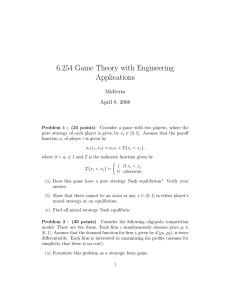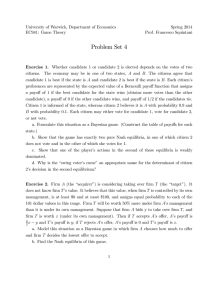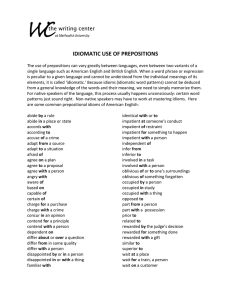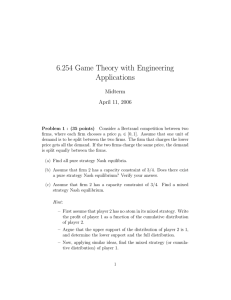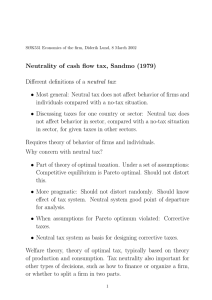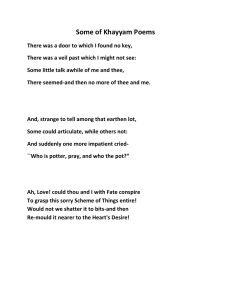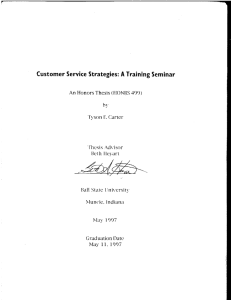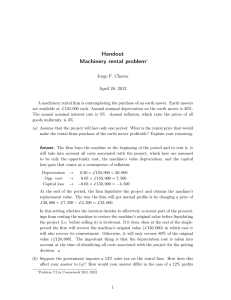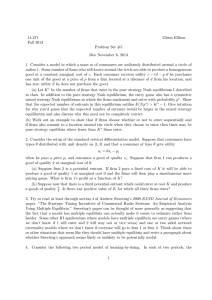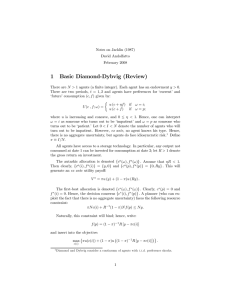14.02 Quiz 1, Spring 2012 1 True/ False Questions: (5 points each)
advertisement
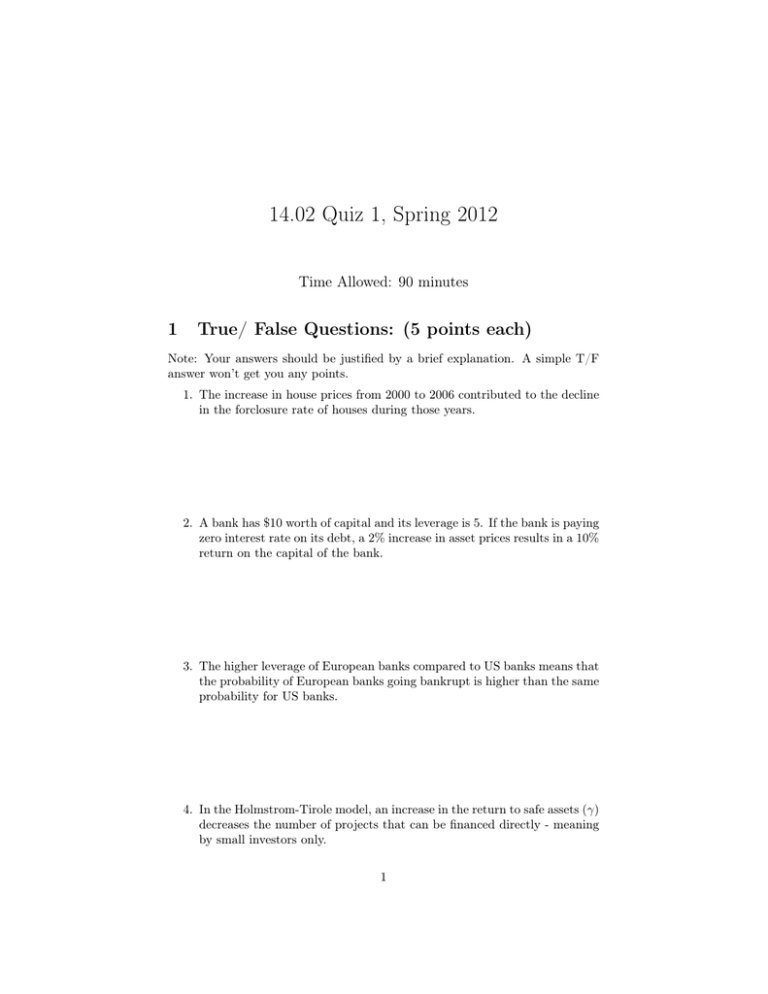
14.02 Quiz 1, Spring 2012 Time Allowed: 90 minutes 1 True/ False Questions: (5 points each) Note: Your answers should be justified by a brief explanation. A simple T/F answer won’t get you any points. 1. The increase in house prices from 2000 to 2006 contributed to the decline in the forclosure rate of houses during those years. 2. A bank has $10 worth of capital and its leverage is 5. If the bank is paying zero interest rate on its debt, a 2% increase in asset prices results in a 10% return on the capital of the bank. 3. The higher leverage of European banks compared to US banks means that the probability of European banks going bankrupt is higher than the same probability for US banks. 4. In the Holmstrom-Tirole model, an increase in the return to safe assets (γ) decreases the number of projects that can be financed directly - meaning by small investors only. 1 5. Provided there is enough liquidity in the economy, the market will always allocate it to the firms that face an unexpected liquidity shortage. 6. A 10% fall in investment has the same impact on GDP as a 10% fall in consumption. 7. Suppose that the government introduces a new spending program that is fully paid for by an increase in taxes. Such a program will have no effect on investment. 8. Higher nominal interest rates increase the demand for cash. 2 Long Question 1: a linear IS-LM model (30 points) Consider an economy described by the following equations: C = a + b(Y − T ) I = cY − di + e Md = f Y − gi P ¯ G = G 2 Ms P P = ¯ M = 1 1. Derive an expression for the IS-curve and explain what this equation rep­ resents. (5 points) 2. Derive an expression for the LM-curve and explain what this equation represents. (5 points) 3. Compute the level of private saving when both the goods and the financial market are in equilibrium. (10 points) 4. Keeping government revenue (T ) constant, what is the impact of an in­ crease in government spending (G) on total output and private saving? Show the impact on output using an IS-LM graph. (5 points) 3 5. Use an IS-LM graph to show the impact of an increase in the supply of money (M̄ ) on output. What happens to investment? (5 points) 3 Long Question 2: A Modification of the DiamondDybvig model (30 points) Consider the standard version of the Diamond-Dybvig model discussed in class. A bank has access to two investment technologies. There is a short term technology which yields 1 in period t = 1 for every unit invested in period t = 0. There is also a long term technology which yields R > 1 in period t = 2 for every unit invested. The bank can choose to liquidate its long term investment in t = 1, in which case it gets L < 1 units for each unit invested at t = 0. Each consumer has 1 unit of endowment and the total size of the population is normalized to 1. In period t = 0 consumers do not know if they will be impatient or patient. In period t = 1, a fraction 1 − π of consumers realise that they are impatient, which means they only get utility from consuming their endowment immediately, in $t=1$. A fraction π of consumers find out that they are patient, which means that they only enjoy consuming at t = 2. The bank offers a contract which gives right to withdrawals of size (c∗1 , c2∗ ) in period t = 1 and t = 2 respectively to consumers who in t = 0 deposit their endowment at the bank. 1. Assume c∗1 > 1. What is the maximum amount c2∗ that a bank could promise to patient consumers under the assumption that only impatient consumers will withdraw c∗1 at t = 1? (5 points) 4 2. How much should the bank invest in each technology to fulfill its promise of (c∗1 , c2∗ )? (5 points) Now we change our assumptions. We assume that instead of the bank there is a firm which has access to exactly the same two technologies as the bank. The only difference is that instead of the deposit contract, for each dollar invested in the firm, the firm offers a share. A "share" is the right to receive a payment D1 at t = 1 and D2 at t = 2 independent of whether who owns the share is patient or impatient. In t = 1, consumers can sell or buy the shares of the firm, only after receiving D1 and finding out whether they are impatient or patient. The sequence of events is as follows: In t = 0 people give their one unit of endowment to the firm. In t = 1 the firm pays D1 . After D1 has been paid and consumers find out whether they are patient or impatient, consumers can sell or buy the shares of the firm. In t = 2 the firm pays D2 = R(1 − D1 ), since we are assuming that the firm makes zero profit. 3. Let us first assume the price of the shares is such that patient consumers can buy all of the shares of impatient consumers by giving them their D1 dividends. Show that if D1 = (1−π)c∗1 then impatient consumers consume c∗1 and patient consumers consume c∗2 . (5 points) 5 4. Find the equilibrium price of shares in t = 1 (call it Ps ) that allows patient consumers to buy all the shares from impatient consumers using their own dividends D1 . (Hint: The total expenditure by patient consumers must equal the value of all shares sold by impatient consumers) (10 points) 5. Is it possible to have a bank-run (i.e. the firm is liquidated although it is solvent) in this case? Provide some intuition. (5 points) 6 MIT OpenCourseWare http://ocw.mit.edu 14.02 Principles of Macroeconomics Spring 2014 For information about citing these materials or our Terms of Use, visit: http://ocw.mit.edu/terms.
